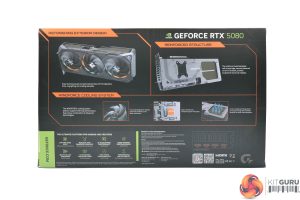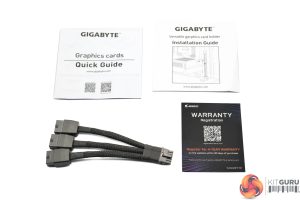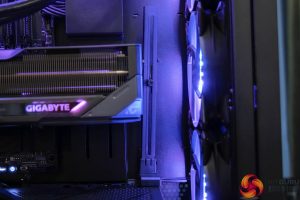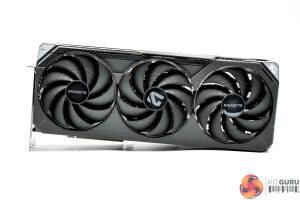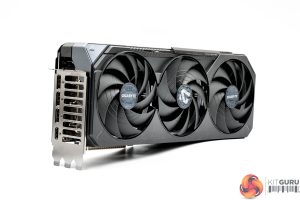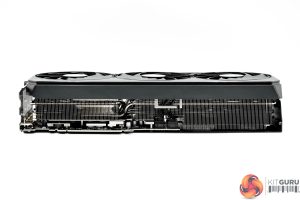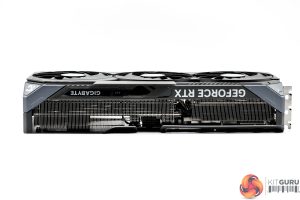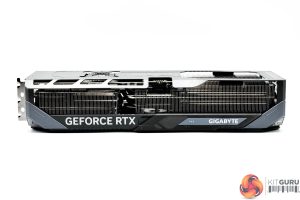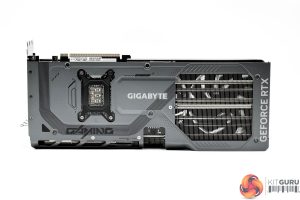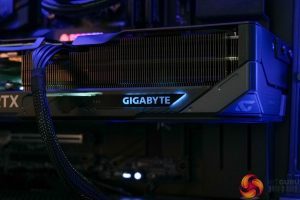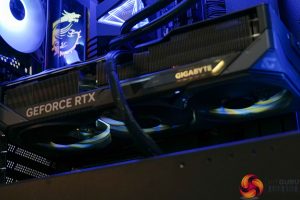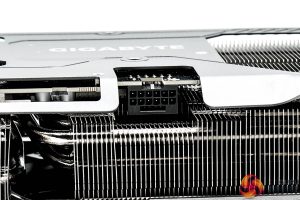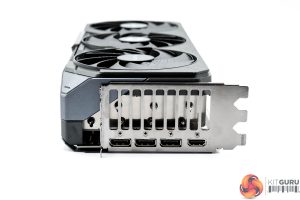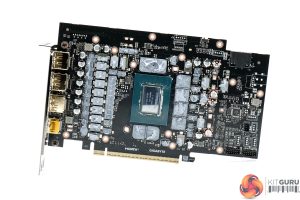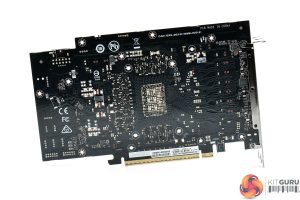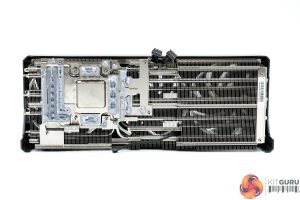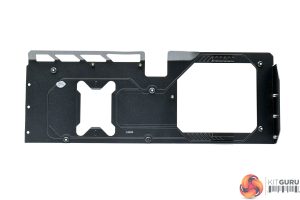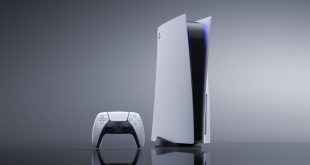Gigabyte's RTX 5080 Gaming OC ships in a black box with a large ‘G' for ‘Gaming' logo on the front.
On the back, Gigabyte highlights a few key features of the card and its cooling system.
Inside there's a few quick-start guides and a warranty note, alongside the triple 8-pin PCIe power adapter.
Gigabyte also includes a GPU support bracket which screws into the end of the card to avoid any unwanted sagging.
As for the card itself, while not fully identical to the Gaming OC design of the 40 series – such as the 4080 Super – the overall aesthetic is very similar. That means we find a matte black plastic shroud, and Gigabyte makes a point of emphasising that this is ‘textured' plastic, which adds some visual interest.
The three fans, which make up part of the Windforce cooling solution, are named ‘Hawk' fans and each measure approximately 110mm in diameter. As we have seen for many years on Gigabyte cards, the central fan spins in reverse relative to the outer two.
In terms of its size, the Gaming OC measures in at 340 x 140 x 70mm, while it weighed in at 1793g on my scales.
The front side of the card is home to the GeForce RTX and Gigabyte logos – the latter of which is one of the RGB zones on the card.
As for the backplate, this made of a grey metal and while it is full-length, there is a very sizeable ‘flow through' area to improve with heat dissipation. It's interesting that the backplate ‘wraps over' the side slightly, which Gigabyte claims improves overall structural rigidity – in any case, it looks pretty cool.
You will also note the BIOS switch positioned on the back, offering a choice of either the Silent or Performance modes depending on your preference – the only difference is the fan speed.
Remember that Gigabyte RGB logo we mentioned a moment ago? Well, there's actually a sliding cover here, so you can either have the RGB shining through the Gigabyte logo, or you can opt to see the LED strip itself.
There's also RGB LEDs positioned on the outer edges of the fans, and this is all controllable within the Gigabyte Control Center software.
As expected, power is delivered by a single 12V-2X6 connector. Display outputs consist of three DP 2.1 and one HDMI 2.1 ports.
Moving onto the PCB, Gigabyte has opted for a 14-phase VRM for the GPU and a 3-phase VRM for the memory, all using Monolithic Power Systems MPS MP87993 MOSFETs, rated at 50A according to HWBusters. A Monolithic MP29816 controller is used for the GPU, with a Monolithic MP2988 controller for the memory.
As for the heatsink, Gigabyte is using a vapour chamber to contact the GPU die, VRAM and MOSFETs. The heatsink itself utilises a total of nine heatpipes and a dense fin stack.
You will also have noticed that Gigabyte is not using thermal pads, but something they call ‘server grade thermal conductive gel', AKA thermal putty. I asked Gigabyte why they went in this direction and they sent me the following response:
‘Our purpose in using putty is not to improve thermal performance but to reduce failure. We've already incorporated it in some of the RTX 40 series models, and the RMA cases related to memory and other electronics failures have significantly dropped, as it eliminates the possibility of thermal pads shifting or being pulled by the gravity. As so, we believe this provides more stability using scenarios to the gamers. The thermal performance between putty and pads can be considered the same.'
It's important to note that Gigabyte recommends the excess thermal putty be cleaned off and re-applied upon disassembly.
 KitGuru KitGuru.net – Tech News | Hardware News | Hardware Reviews | IOS | Mobile | Gaming | Graphics Cards
KitGuru KitGuru.net – Tech News | Hardware News | Hardware Reviews | IOS | Mobile | Gaming | Graphics Cards



